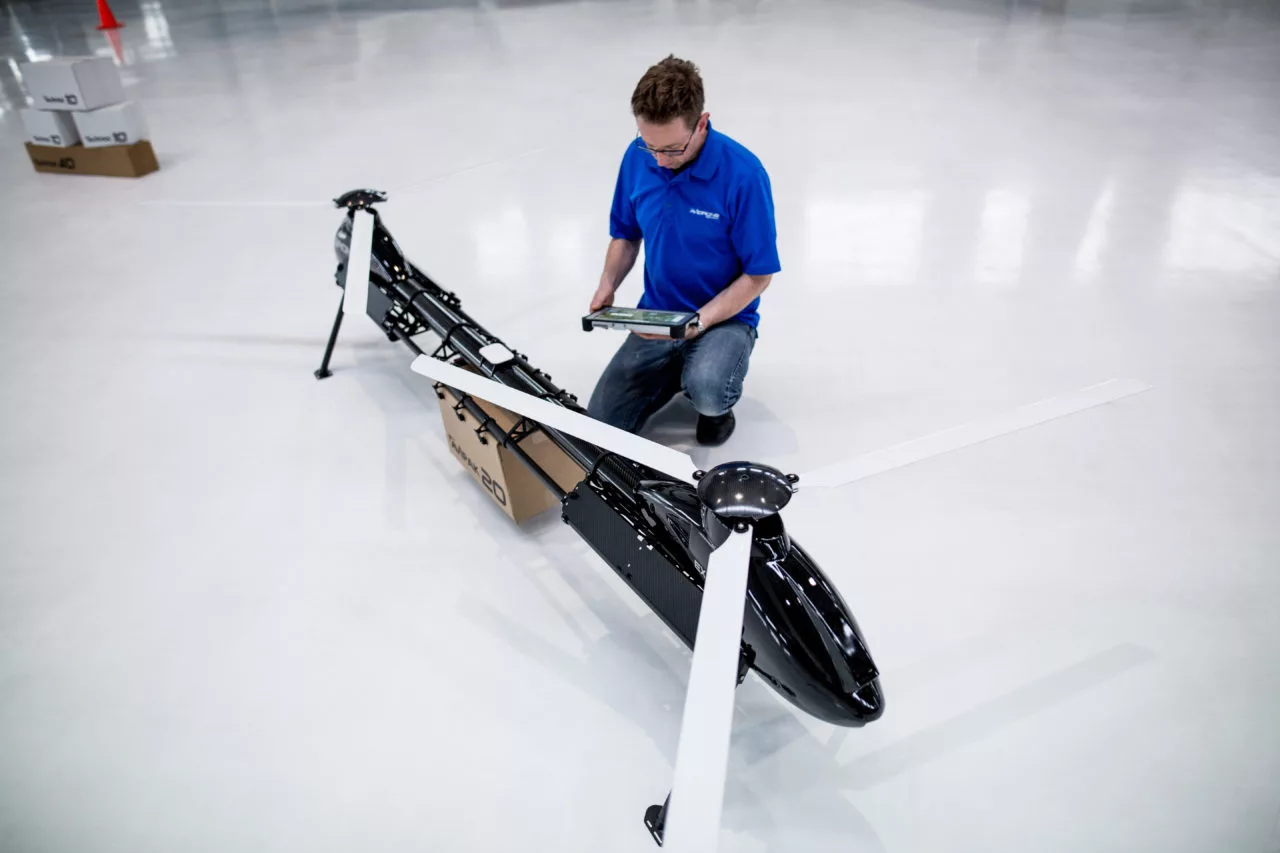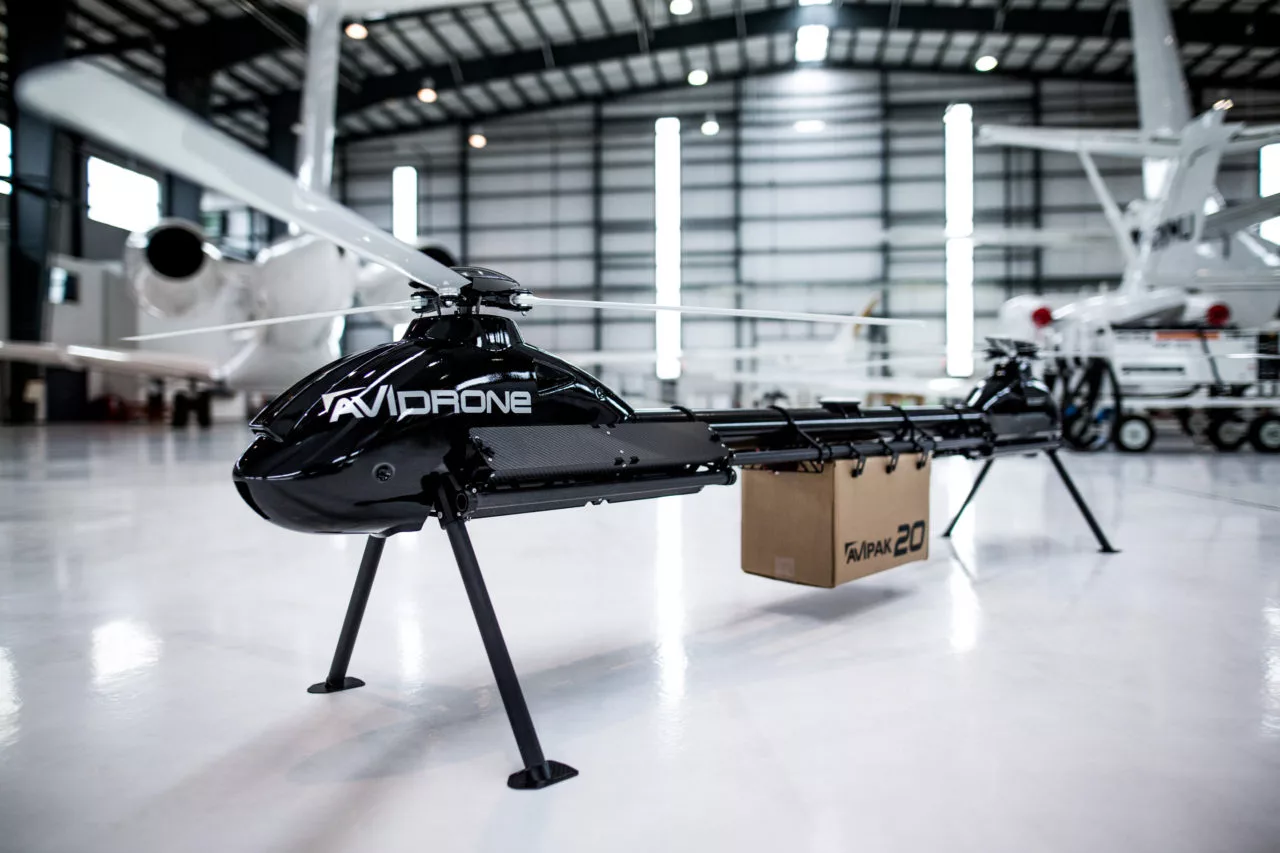There are now a number of heavy-lift cargo drones on the market, and they pretty much all incorporate six to eight horizontal propellers. The Avidrone 210TL is different, though, in that it goes with two sets of full rotor blades.
Manufactured by Canadian startup Avidrone Aerospace, the 210TL essentially takes the form of two miniature unmanned helicopters that are joined together at the tail by a horizontal boom. It's sort of like a drone version of Boeing's Chinook heavy-lift helicopter.
The user starts by hooking their cargo onto the boom's rails – clients can opt for a custom attachment system that's configured to the unique size and shape of their cargo, or they can go with a standard system that incorporates pre-supplied cargo boxes of different sizes.
Next, utilizing a tablet or laptop that's running Avidrone's house-brand G4 autopilot system, they program in a flightpath for the drone to follow. From there, it's pretty much just a matter of launching the aircraft. It will proceed to autonomously fly to and land at its destination, release the cargo by raising its boom rail hooks, then fly back to its point of take-off (or wherever it's been instructed to go next).

According to the company, one 1.3-hour charge of the 210TL's lithium battery pack should be good for a range of 120 km (75 mi). The drone can carry up to 25 kg (55 lb) and has a top speed of 100 km/h (62 mph). But why go with the tandem rotor blade setup?
CEO Scott Gray tells us that while the more commonly seen multicopter drones are simpler to design, they're not nearly as powerful or energy-efficient as the 210TL. For a given amount of battery power, it can reportedly travel up to 10 times farther than a multicopter, or lift cargo that's five times heavier.
The Avidrone 210TL is already being manufactured, and has been commercially available for about a year and a half. It can be seen in action, in the video below.
Source: Avidrone Aerospace





